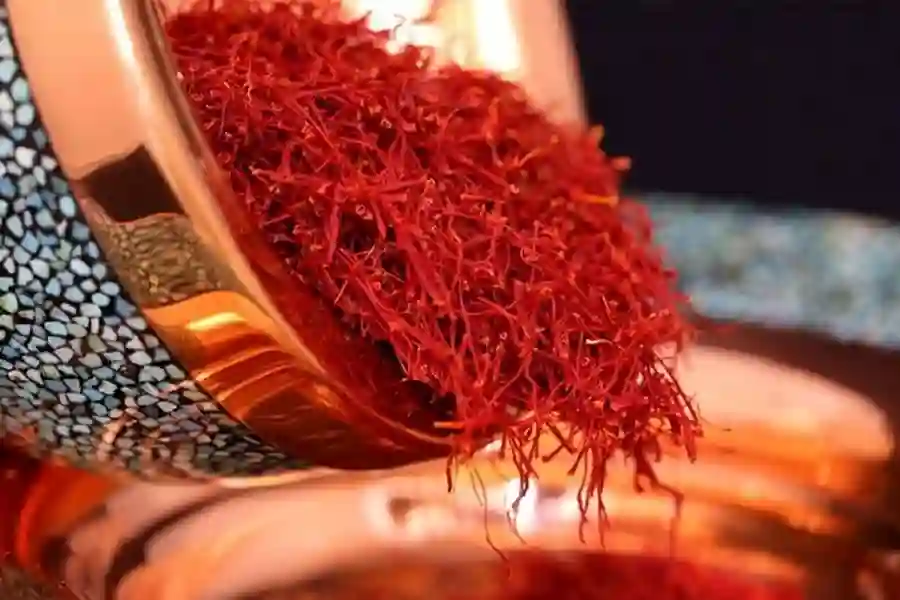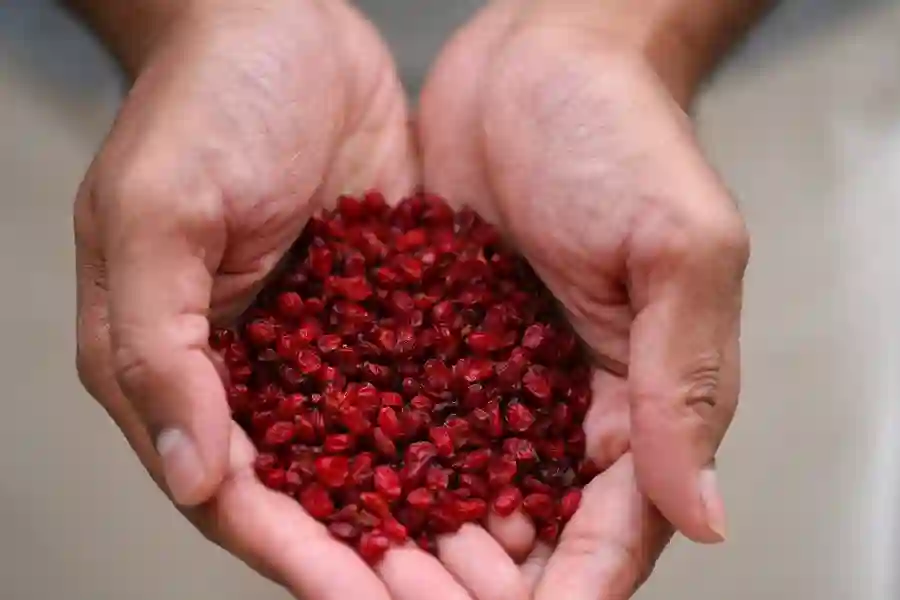Known globally as “red gold,” Iranian Saffron is unequivocally the world’s most luxurious and precious spice. Harvested by hand from the delicate Crocus sativus flower, its vibrant crimson threads carry an unmatched aroma, flavor, and color. For international importers, this is more than just a spice; it’s a high-value commodity that signals quality and prestige. This guide explores the unique attributes that make it a prized possession in global markets and why securing a supply of authentic Iranian Saffron is a strategic move for your business.
What Makes Iranian Saffron the World’s Most Coveted Spice?
Iranian Saffron consists of the dried stigmas (threads) of the saffron crocus flower. Its sky-high price is a direct result of its labor-intensive harvesting process, which must be done entirely by hand. It takes approximately 150,000 flowers to produce just one kilogram of this precious spice. For centuries, Iran has been the heartland of saffron production, accounting for over 90% of the world’s supply. This long heritage has allowed Iranian producers to perfect cultivation and drying techniques, making Iranian Saffron the global benchmark for quality, potency, and purity.

The Ancient Roots: A History Steeped in Luxury
The history of Iranian Saffron is as rich and colorful as the spice itself. Its use in Persia dates back over 3,000 years, where it was revered not just for its culinary properties but also for its medicinal and spiritual significance. Ancient Persian kings used it to perfume their halls, dye their royal garments, and as a key ingredient in their daily teas for its purported healing abilities. As trade routes like the Silk Road developed, Iranian Saffron became one of Persia’s most valuable exports, enchanting cultures from Rome to China with its unique character.
From Flower to Thread: The Meticulous Harvesting Process
The production of Iranian Saffron is an art form defined by patience and precision. The saffron crocuses bloom for only a few weeks in the autumn, and the flowers must be harvested at dawn before the sun’s heat can damage the delicate stigmas. Farmers painstakingly hand-pick each flower and then, in an equally delicate process, separate the three crimson stigmas from the rest of the flower. This meticulous, manual labor is what makes Iranian Saffron so rare and valuable, ensuring that every thread is a testament to human effort and care.
The Unmistakable Quality of Premium Iranian Saffron
What truly sets Iranian Saffron apart is its superior chemical composition, which translates into an unparalleled sensory experience. The country’s unique climate and fertile soil, particularly in the Khorasan region, produce saffron with exceptionally high concentrations of its key active compounds. This results in a product with a more intense aroma, a deeper flavor, and a more powerful coloring capacity than saffron grown elsewhere. For chefs, food manufacturers, and discerning consumers, this consistent and potent quality makes authentic Iranian Saffron the only choice for achieving authentic and impactful results.
A Symphony of Senses: Aroma, Flavor, and Coloring Strength
The quality of Iranian Saffron is scientifically measured by its concentration of three key compounds, as defined by the ISO 3632 standard. The first is crocin, which is responsible for the saffron’s powerful coloring strength (its vibrant red-orange hue). The second is picrocrocin, which delivers the characteristic slightly bitter yet rich flavor. The third is safranal, which gives the saffron its strong, earthy, and floral aroma. Premium Iranian Saffron consistently scores the highest marks in all three categories, guaranteeing a multi-sensory experience that elevates any dish it touches.

Understanding the Grades: From Negin to Pushal
For an importer, understanding the different grades of Iranian Saffron is crucial for making an informed purchase. The grading is based on the part of the stigma included in the final product, which affects its purity and potency. Working with a supplier who can provide different grades allows you to target various market segments.
The main types are:
- Negin (Super Negin): The highest quality grade. It consists only of the deep red tips of the stigma, with no yellow or orange style attached. The threads are long, uniform, and have the highest coloring and aroma power
- Sargol: Similar to Negin, this grade contains only the red stigmas but the threads may be shorter or slightly broken. It still offers very high quality and potency
- Pushal: This grade includes the red stigma along with a small amount (1-3mm) of the yellow style. While still good quality, its coloring power is slightly lower than Negin and Sargol
Why You Should Import Iranian Saffron?
Adding Iranian Saffron to your import portfolio is not just about offering a new product; it’s about investing in a high-demand, high-margin luxury item with a stable and growing market. Its reputation as the world’s finest spice provides an immediate mark of quality to your brand. For businesses in the food, wellness, and cosmetic industries, sourcing authentic Iranian Saffron opens doors to premium markets and discerning customers who are willing to pay a premium for unparalleled quality and authenticity. It’s a strategic asset that can significantly enhance your brand’s prestige.
High Demand in Lucrative Global Markets
The demand for Iranian Saffron is robust and spans across multiple industries. In the culinary world, it is a prized ingredient for Michelin-starred chefs and in traditional dishes from Spanish paella to Italian risotto. Beyond the kitchen, the wellness industry values it for its antioxidant properties and use in dietary supplements. The cosmetic industry is also exploring its potential in luxury skincare products. This broad appeal makes Iranian Saffron a key player among Persian spices, ensuring a consistent and diversified demand stream for importers.
High Value-to-Weight Ratio and Strong ROI
One of the most attractive commercial aspects of Iranian Saffron is its extremely high value-to-weight ratio. A small quantity of saffron carries significant monetary value, which dramatically reduces shipping and storage costs relative to its price. This makes it an ideal product for international trade. For importers, this translates into a more efficient supply chain and the potential for a very strong return on investment (ROI). The high market price, combined with a steady demand, creates a profitable business opportunity with less logistical complexity than bulkier commodities.
Diverse Applications Across Multiple Industries
The versatility of Iranian Saffron extends far beyond its traditional use as a food coloring and flavoring agent. Its unique properties are being leveraged in a growing number of innovative products, creating new revenue streams for importers who can supply these emerging markets. This multi-industry appeal de-risks your investment and broadens your potential customer base.
Its diverse applications include:
- Gourmet Food Industry: Used in premium rice dishes, sauces, desserts, and even artisanal cheeses and butters
- Health and Wellness: Formulated into capsules, tinctures, and herbal teas for its health-promoting benefits
- Cosmetics and Skincare: Incorporated into luxury creams, serums, and masks for its antioxidant and anti-inflammatory properties
- Beverage Industry: Used to infuse spirits, create unique syrups for cocktails, and as a key ingredient in specialty teas

A Practical Guide to Sourcing Authentic Iranian Saffron
Given its high value, the market for Iranian Saffron is unfortunately susceptible to counterfeits and adulteration. For an importer, the ability to source authentic, high-purity saffron is paramount to protecting your investment and reputation. This requires working with a trustworthy supplier and having a basic understanding of how to identify genuine saffron. Key factors to consider are the physical appearance of the threads, their behavior in water, and their aroma. Building a relationship with a supplier who provides certified lab analyses is the best way to guarantee quality.
Identifying Genuine Saffron: How to Avoid Fakes
Distinguishing real Iranian Saffron from fakes is a critical skill. Genuine saffron threads are trumpet-shaped, with one end being thinner than the other. When placed in cool water, authentic saffron will slowly release a golden-yellow color while the threads themselves remain red. Fakes, often made from dyed corn silk or safflower, will immediately bleed a bright red or orange color and the threads will lose their color quickly. Additionally, genuine saffron has a distinct, complex aroma that is both floral and earthy, not just musty or chemical.
The Critical Role of Packaging and Storage
To preserve its precious aroma, flavor, and color, Iranian Saffron must be protected from its three enemies: light, air, and moisture. Reputable suppliers package saffron in airtight containers that are often made of tin or dark glass to block out light. For importers, ensuring proper storage upon arrival is just as important. The saffron should be kept in these airtight containers in a cool, dark, and dry place. Proper storage can maintain the saffron’s peak quality for up to two years, safeguarding its value.
Secure Your Supply of Red Gold with Tehran Offers
Iranian Saffron is a timeless symbol of luxury and quality, offering a powerful business opportunity for discerning importers. Its unmatched sensory profile and diverse applications make it a high-demand commodity in premium markets worldwide. At Tehran Offers, we are your direct link to Iran’s most reputable saffron producers. We navigate the complexities of sourcing, quality verification, and international logistics to ensure you receive only the finest, certified Iranian Saffron. Elevate your brand with the world’s best spice. Contact us today for a detailed analysis or a competitive quote.
Frequently Asked Questions
What is the main difference between Negin and Sargol saffron?
Negin consists of longer, uniform red threads with no yellow style, making it the highest grade visually. Sargol is also pure red threads but they may be shorter or broken. Both offer excellent quality.
What is the best way to test for saffron authenticity?
Place a few threads in a glass of cool water. Real saffron will slowly release a golden hue while the threads stay red. Fakes will quickly bleed a red/orange color into the water.
How should I store saffron to maintain its quality?
Store it in an airtight container, away from direct sunlight, heat, and moisture. A cool, dark cupboard is ideal. Do not store it in the refrigerator, as condensation can damage its quality.













Join The Discussion